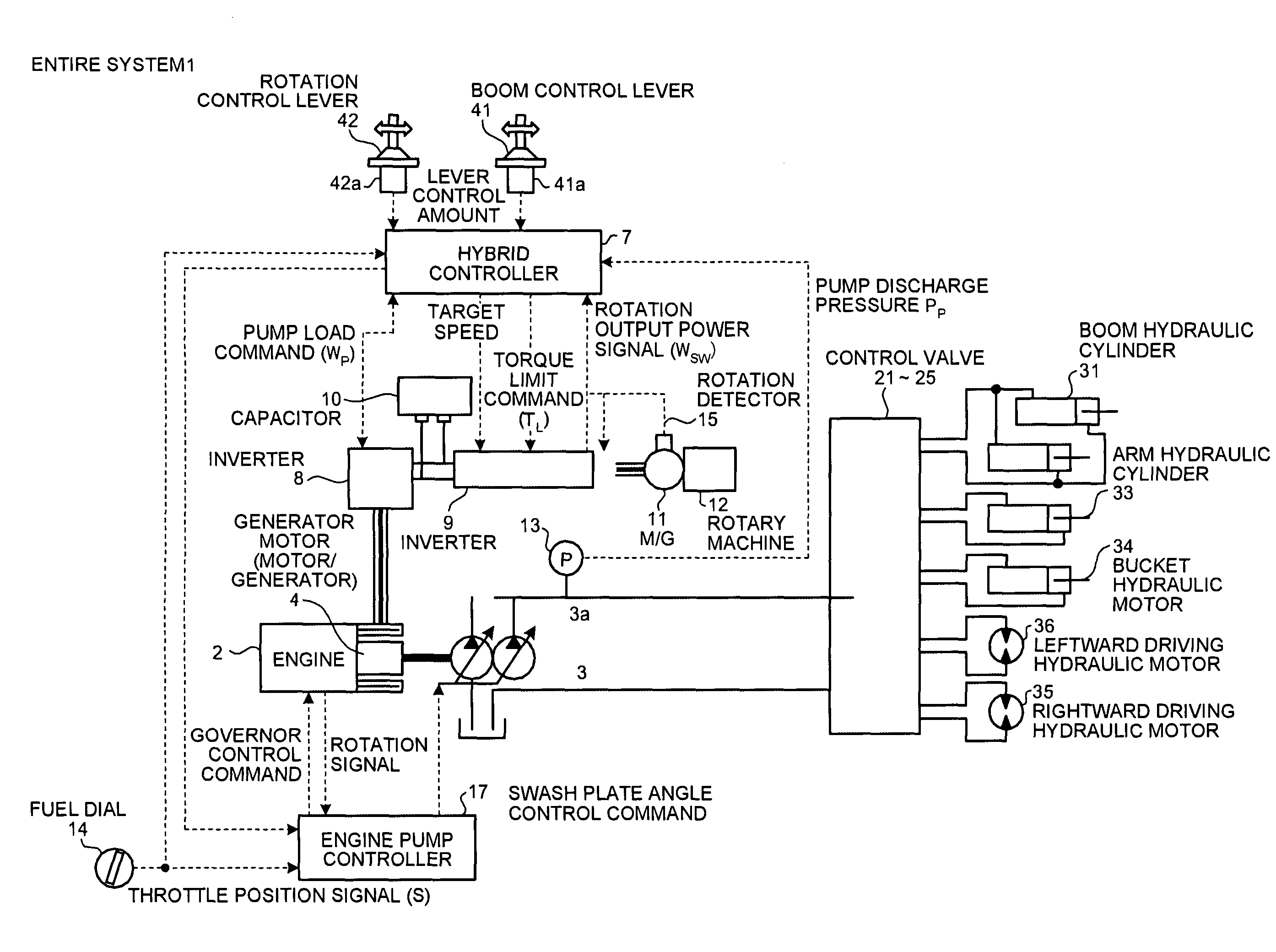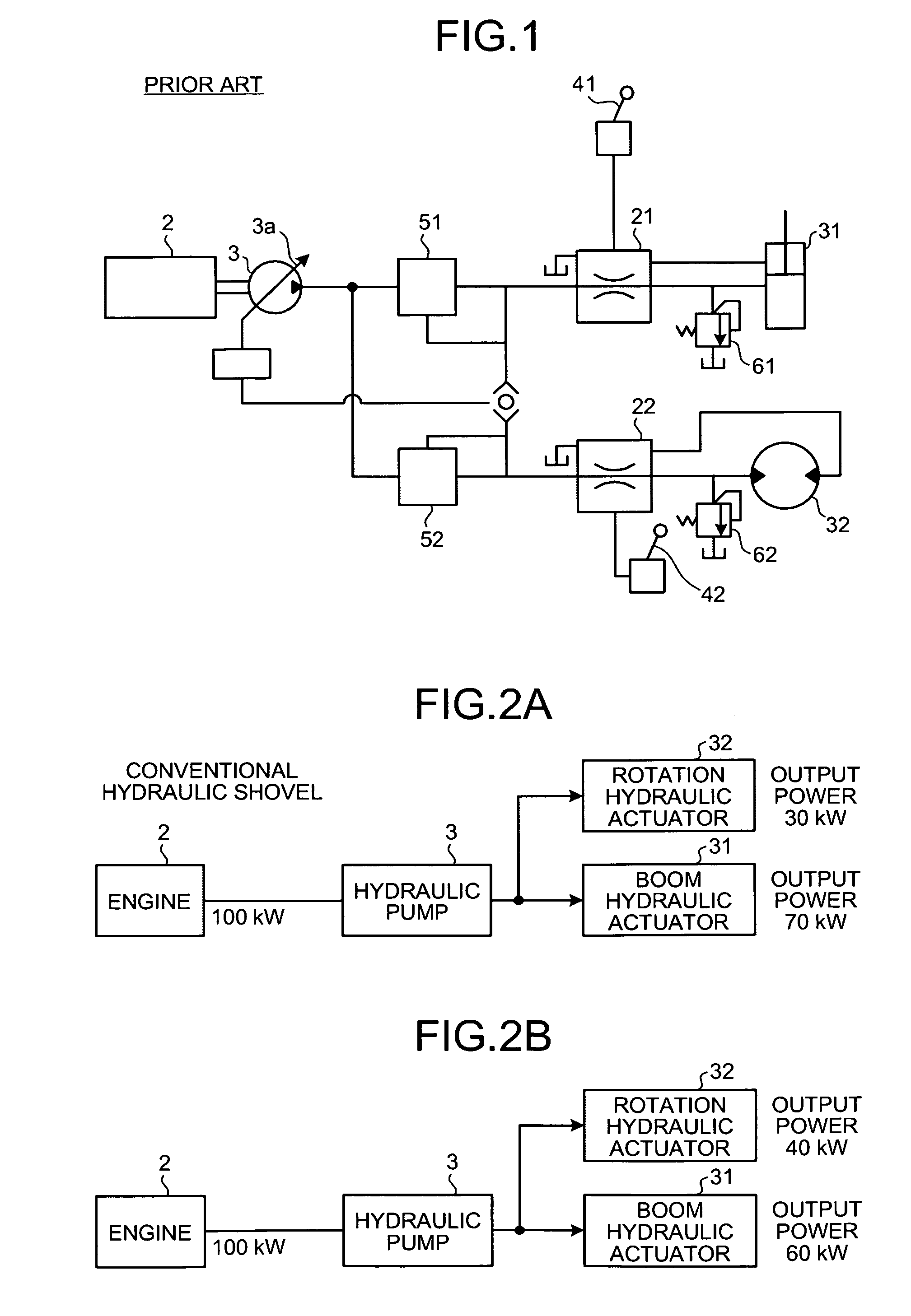Control apparatus for work machine
a control apparatus and work machine technology, applied in the direction of fluid couplings, couplings, transportation and packaging, etc., can solve the problems of difficult supply of pressurized oil, energy loss or fuel inefficiency, etc., and achieve accurate hoist rotary work, good speed matching, and no reduction in the lifting speed of the boom
- Summary
- Abstract
- Description
- Claims
- Application Information
AI Technical Summary
Benefits of technology
Problems solved by technology
Method used
Image
Examples
Embodiment Construction
[0077]Embodiments of the invention will be described below with reference to the drawings. FIG. 3 shows an overall configuration of a construction machine 1 according to an embodiment of the invention. The construction machine 1 is intended to be a hydraulic shovel.
[0078]The construction machine 1 includes an upper rotary body and a lower crawler carrier, and the lower crawler carrier includes right and left crawler tracks. A work machine including a boom, an arm, and a bucket is attached to a machine body. The boom is actuated by driving a boom hydraulic cylinder 31, the arm is actuated by driving an arm hydraulic cylinder 33 (hereinafter, sometimes referred to as “an arm hydraulic actuator 33”), and the bucket is actuated by driving a bucket hydraulic cylinder 34 (hereinafter, sometimes referred to as “a bucket hydraulic actuator 34”). The left crawler track and the right crawler track are rotated by driving a left-crawler hydraulic motor 35 and a right-crawler hydraulic motor 36 ...
PUM
 Login to View More
Login to View More Abstract
Description
Claims
Application Information
 Login to View More
Login to View More - R&D
- Intellectual Property
- Life Sciences
- Materials
- Tech Scout
- Unparalleled Data Quality
- Higher Quality Content
- 60% Fewer Hallucinations
Browse by: Latest US Patents, China's latest patents, Technical Efficacy Thesaurus, Application Domain, Technology Topic, Popular Technical Reports.
© 2025 PatSnap. All rights reserved.Legal|Privacy policy|Modern Slavery Act Transparency Statement|Sitemap|About US| Contact US: help@patsnap.com



